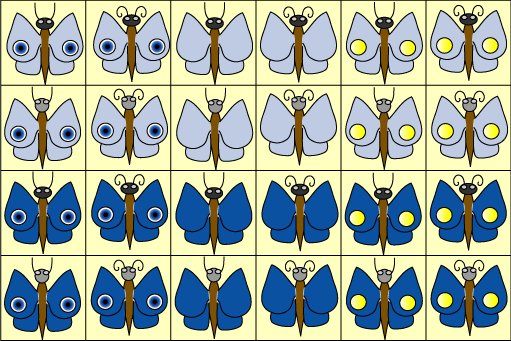Skip over navigation
Four children were sharing a set of twenty-four butterfly cards. It looked easy! They could have six each.
But it was far from easy!

First Kim said, "I like the ones with curly antennae. I want those!"
"I don't like the ones with oval heads," complained Wim, "But want all the others!"
Jim only wanted the ones with yellow spots.
Tim wanted butterflies which only had dark wings and blue spots.
"You can't have two things," complained Jim, "That's greedy! You'll get more cards!"
Do you think he was right?
Are there any cards that nobody wants?
Are there any cards that all the children want?
Are there any cards that just one child wants?
Can all the children have the cards they want?
Can you think of a fair way for them to share out the cards?
You might like to print off an A4 copy of the cards.

Or search by topic
Number and algebra
Geometry and measure
Probability and statistics
Working mathematically
Advanced mathematics
For younger learners
Butterfly Cards
Age 7 to 11
Challenge Level 





Four children were sharing a set of twenty-four butterfly cards. It looked easy! They could have six each.
But it was far from easy!

First Kim said, "I like the ones with curly antennae. I want those!"
"I don't like the ones with oval heads," complained Wim, "But want all the others!"
Jim only wanted the ones with yellow spots.
Tim wanted butterflies which only had dark wings and blue spots.
"You can't have two things," complained Jim, "That's greedy! You'll get more cards!"
Do you think he was right?
Are there any cards that nobody wants?
Are there any cards that all the children want?
Are there any cards that just one child wants?
Can all the children have the cards they want?
Can you think of a fair way for them to share out the cards?
You might like to print off an A4 copy of the cards.
You may also like
Cereal Packets
How can you put five cereal packets together to make different shapes if you must put them face-to-face?

